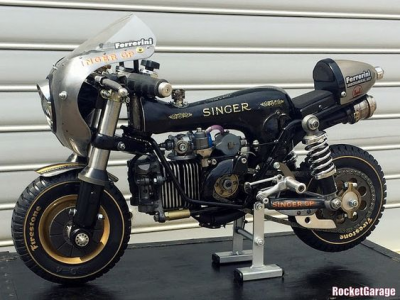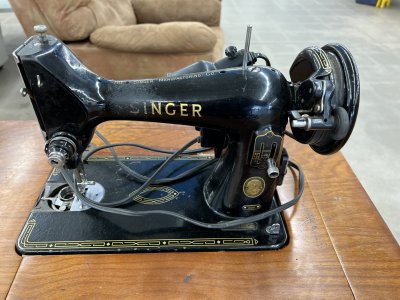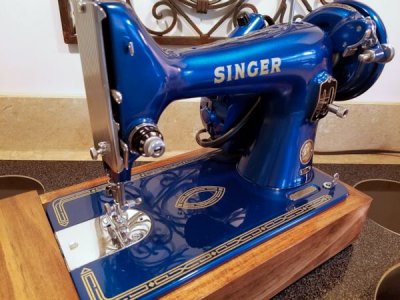- Joined
- Jan 25, 2015
- Messages
- 2,558
Keep in mind if you want to work heavy materials, the retail machines are not what you want. They may be all metal and put modern plastic machines to shame, but they're still retail models.That's the kind of feedback I want. I don't want/need to start with something borderline undersized even if it's a good machine.
Thanks
If you want to work heavy canvas, upholstery weight leather and similar materials, you need something more on the commercial scale.
Retail machines (even the old all steel ones) were primarily designed to make and repair clothing. One of the big tells if it's commercial grade or retail is the motor is often integrated into retail machines and the presser foot usually doesn't lift very high. Somewhere in the 5/16 to 1/2" range means retail machine. They have a low lift because they are only designed for light materials, not heavy stuff. Most retail vintage machines top out at a couple layers of denim. They will do more, but you're pushing them outside of their operations range and the results can often be less than optimal.
Retail is also pretty limited in needle size choice. That's important if you want to do things like leather where you want larger thread and longer stitch lengths.
You can't always go by presser clearance though. My 331K105 is 100% commercial grade, yet only has a low lift presser. There's lots of "commercial" machines out there that are tailoring machines.
You have to remember that commercial machines are usually designed and made to a specific purpose. Even if something is commercial, it may be designed to sew light materials at a very high stitch rate, yet it's still a commercial machine. These machines are designed to sew very fast, so some sweat shop worker can pump out 5000 pairs of underwear in a day. Yet they're nearly useless for things like garment leather.
As if that weren't enough, sewing machine manufacturers will often "customize" models to requests from purchasers (if they're buying enough to fill a factory) so that the old machine you're looking at might indeed be a commercial grade leather capable machine, but have an attachment or change that makes it unsuitable for what you want to do.
You need to decide what you want to sew, then go out and match the machine to the task. If buying used, be prepared to wait for the right one to show up and it will probably take a good long time...
Last edited:





